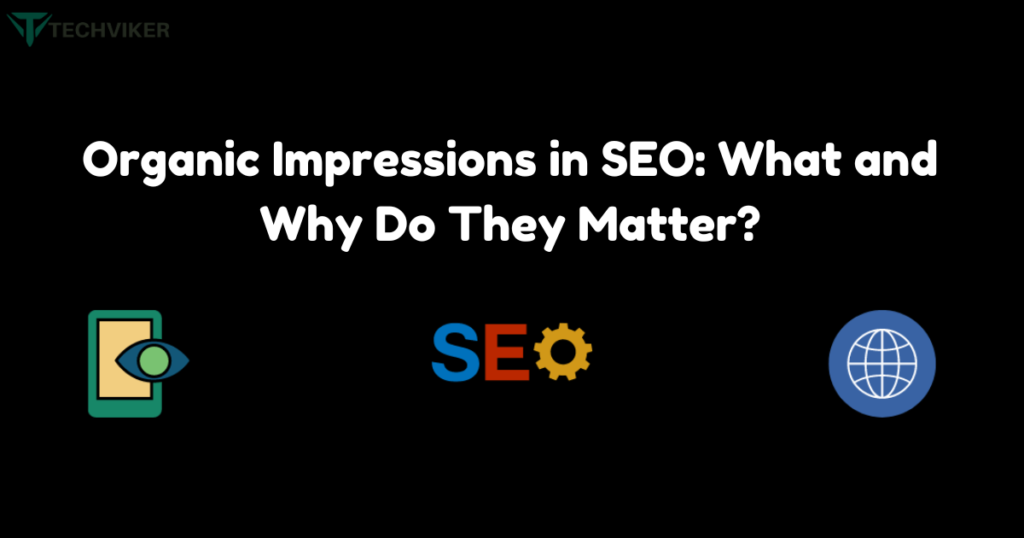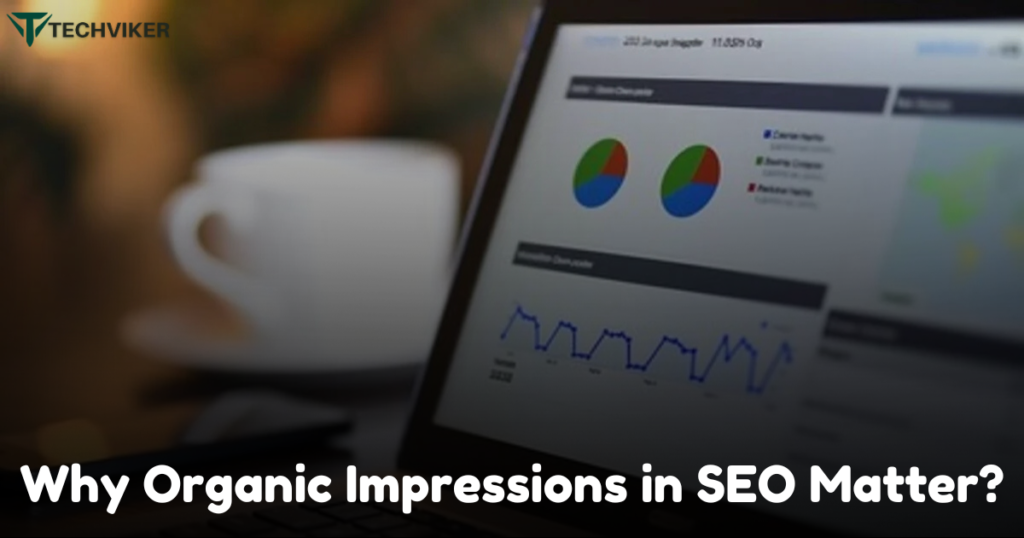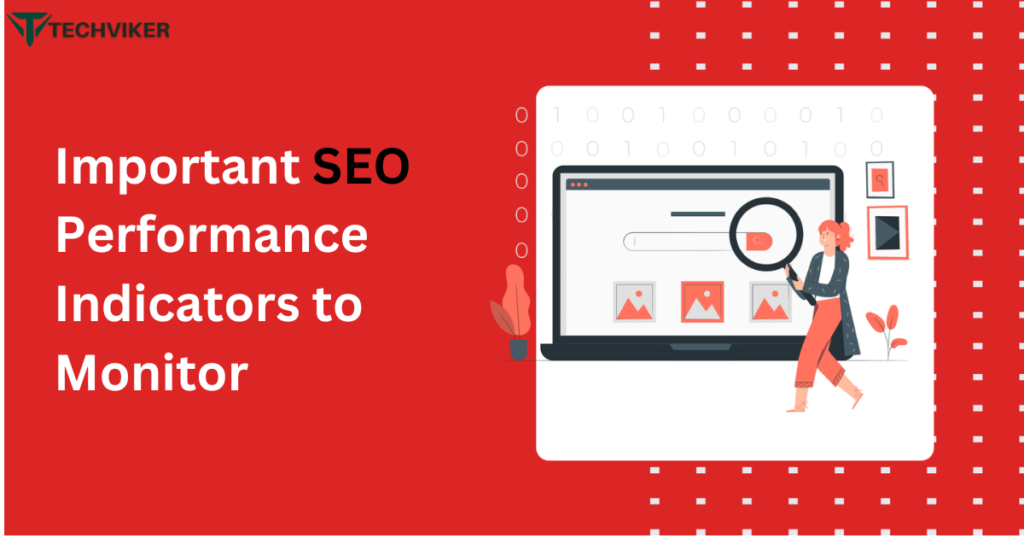Organic Impressions in SEO: What and Why Do They Matter?

Driving organic traffic to your website today in active digital marketing majorly depends on how you play out your strategies in SEO. The reason is that more businesses will now invest in the same to amplify their visibility and attract users. Therefore, this has made “SEO impressions” and “organic impressions” the recent lingo specifying SEO performance. Understanding what each of these terms means and why they’re important can help optimize SEO campaigns with success tracking. This article digs deep into organic impressions in SEO, explaining what they are, why they matter, and how one might apply them to succeed in SEO.
What Are Organic Impressions in SEO?
An impression in SEO is a term that describes the event of a web page appearing within search engine results pages (SERPs) for whatever reason a user typed in their query. If your webpage comes up on the search engine for a particular query, you get one impression; however, when the user chooses not to click the link, nothing happens. Organic impressions are specific instances of non-paid search results-for example, as opposed to paid advertisements.
For example, if somebody searches for “best SEO tools” and your page is returned in that search, that’s an impression. Yet, if the same person doesn’t subsequently click on your page, the impression doesn’t become a click or traffic. Importantly, impressions are a precursor to engagement — they are one of the first steps in the user journey.
Why Organic Impressions in SEO Matter

While SEO marketers throw their efforts into metrics like CTR, traffic, and conversions, organic impressions form the raw building block that must not be ignored at all. Here is why organic impressions matter so much:
Hints of Visibility in SERPs
Organic impressions reflect how often your website appears in search results. The more impressions you have, the more exposure your site receives from users searching for relevant terms. The more impressions, the more chances users have to visit your site, even if they haven’t clicked yet. Impressions, therefore, constitute the first step in making users aware of your content.
Measuring Success with SEO
Organic impressions can be tracked to determine the success of your SEO strategy. Such tracking comes in handy because it will allow you to evaluate whether your SEO strategy is working. In most cases, an increase in impressions shows that there is relevance with the content on your website about what is being searched for and it’s ranking better for related searches. Low impressions may be a sign of issues around keyword targeting, website authority, and other SEO performance factors.
Foundation for Clicks and Conventions
Impressions are much more than views. The more impressive your page the more users will be clicking on your listing. SEO impressions are a funnel to potentially convert to actual website traffic which may lead to more conversion if the page is optimized well based on user intent.
Epidemiological Impact on Organic Rankings
Impressions and rankings have a strong correlation with each other. In case your page ranks on higher spots of SERPs for relevant keywords, you are more likely to get impressions. The more high-ranking is, the more probable a page is to be served for this search term. Monitoring impressions together with rankings makes you see how SEO efforts affect viewability at an even deeper level. Additionally, SEO impressions can allow you to understand which of the used keywords propel the most level of visibility so you can refine your SEO strategy accordingly.
Determining the Success of SEO: The Value of Impressions
While tracking the success of an SEO campaign, impressions from the SEO campaign are amongst the most important performance metrics. However, impressions are just not the whole story. Measured with a few other important metrics such as:
Click-through rate (CTR): A good CTR means more people going through their content once they have seen your listing. High impressions, but a low CTR, might be an indication that your listing doesn’t stand out enough or that your keywords’ search intent is not aligned with your content.
Organic Traffic: Impression is the entry point toward organic traffic. If you’re getting a huge number of impressions but miniscule traffic, you must always try to work out ways to improve CTR by rewriting meta descriptions, and title tags or applying other optimizations on the page.
Conversions: Impressions is not the word for revenue. For instance, how many of those impressions are turning into clicks, and then those clicks into conversions? This process will prove if you are indeed generating business goals through SEO.
Assess regularly these metrics along with SEO impressions so that you get a vivid picture of the performance of your campaign and hence select the best form of this approach for further improvement.
Important SEO Performance Indicators to Monitor

Understanding and optimizing for organic impressions in SEO is vital; for this, you need to track the important SEO performance indicators. They can help you find other fields to improve on and keep a broad view of your site’s SEO health:
Keyword Rankings: Monitoring keyword rankings will help you know how well your website is ranking for targeted search queries. The better the ranking, the higher the organic impressions and, thus, the higher the clicks are likely to be.
Organic Traffic: Organic traffic is a measure of the visitors arriving at your website through organic search results. With more impressions, assuming the content is capable of enticing clicks, organic traffic should reflect these impressions.
Click-through Rate (CTR): This is the measure of how effective your SEO listings are in turning impressions into real click-throughs. A CTR as low as 1% means that although your pages do pop up on the pages, they are not so interesting to users to click on.
Bounce Rate: The bounce rate indicates the percentage of visitors who exit your site within a few seconds of having reached it. A high percentage might indicate that users can’t find what they are looking for or that the page does not offer enough functionality. Improving this problem improves user experience as well as SEO.
Backlinks and Domain Authority: DA is something that increases your rank as well as how visible it is. Page rank with a high DA is often ranked higher and hence garner more impressions and clicks.
Conversions: The ultimate goal of a good SEO is that traffic is not in itself sufficient but converted into leads, sales, or else wanted actions. One measures conversions to ensure the efforts of doing the SEO activities align with the business objectives.
How to Increase Organic Impressions in SEO
The increase in organic impressions in SEO may not be very challenging for most websites. However, the process becomes strategic. Among the methods that may help you increase your organic impressions are as follows.
Target Relevant, High-Volume Keywords: Use tools like Google Keyword Planner, SEMrush, or Ahrefs to target high-volume, low-competition keywords that are highly relevant to your content and niche. The more relevant your content is to the search intent behind those keywords, the more impressions you’ll generate.
Optimize Your Content to Fit Search Intent: Ensure that the content aligns with the search intent of the targeted keywords. If the users’ intent is one of researching and seeking information, ensure that there is comprehensive, quality content for them to read. However, if the intent is product-related, make sure that the pages are optimized for conversion.
On-page SEO: Improve the headers on your page, metadata, image alt texts, and content to enhance your rankings. Keep updating and expanding your content to refresh it and keep it fresh.
Acquire Quality Backlinks: Although backlinks are no longer as valuable as they once were, they are still an important factor in the ranking process. The more credible sites that link to your content, the higher its chance of ranking and subsequently getting more impressions.
Site Speed and Mobile Friendliness: A faster site improves user experience and SEO performance. Google uses page speed as a ranking factor so that optimizing for speed improves both impressions and user engagement.
Conclusion
Organic impressions in SEO are a basic element of digital marketing, offering insights into the visibility of the website within the search engine results. While impressions can’t be directly converted to traffic or conversion, they do represent a very important first step in your SEO journey. Optimization of your content, better keyword targeting, and alignment of your SEO with what people are looking for facilitate the increase of your organic impressions, better SEO performance, and eventually qualified traffic on your site. Here, you would track the SEO impressions alongside other performance indicators that could emerge in the CTR, traffic, and conversions to measure effectiveness towards making data-driven decisions for continuous improvement.
